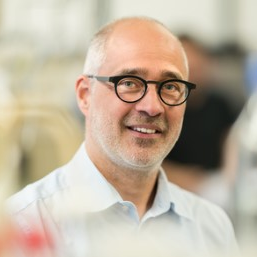Contribution of Enzyme Catalysis to the Achievement of the UN Sustainable Development Goals
A special issue of Molecules (ISSN 1420-3049). This special issue belongs to the section "Bioorganic Chemistry".
Deadline for manuscript submissions: 30 June 2024 | Viewed by 5930
Special Issue Editor
Interests: intensification of bioprocesses; enzyme catalysis; CO2 conversion; microbial and enzymatic electrosynthesis; nonconventional production of organisms; bioprocess engineering
Special Issue Information
Dear Colleagues,
The Sustainable Development Goals (SDGs), set up by the United Nations General Assembly in 2015, are a collection of 17 interlinked goals designed to be a "shared blueprint for peace and prosperity for people and the planet, now and into the future". Therefore, global efforts should focus on achieving these goals. Enzyme catalysis could affect the achievement of different SDGs, in particular: SDG 2—zero hunger; SDG 3—good health and well-being; SDG 7—affordable and clean energy; SDG 9—industry innovation and infrastructure; SDG 12—responsible consumption and production; SDG 13—climate action; SDG 14—life below water; and SDG 15—life on land. The technological aspects could include, for instance, the reduction in resource use (substrates, energy, and water), the conversion of harmful or poorly degradable substances, the generation of sustainably produced energy, and the production of pharmaceuticals and their precursors. The aim of this Special Issue is to show exemplarily examples of how enzyme technologies could contribute to the achievement of the SDGs. All authors have to clearly demonstrate the relevance of their contributions to the SDGs.
Prof. Dr. Dirk Holtmann
Guest Editor
Manuscript Submission Information
Manuscripts should be submitted online at www.mdpi.com by registering and logging in to this website. Once you are registered, click here to go to the submission form. Manuscripts can be submitted until the deadline. All submissions that pass pre-check are peer-reviewed. Accepted papers will be published continuously in the journal (as soon as accepted) and will be listed together on the special issue website. Research articles, review articles as well as short communications are invited. For planned papers, a title and short abstract (about 100 words) can be sent to the Editorial Office for announcement on this website.
Submitted manuscripts should not have been published previously, nor be under consideration for publication elsewhere (except conference proceedings papers). All manuscripts are thoroughly refereed through a single-blind peer-review process. A guide for authors and other relevant information for submission of manuscripts is available on the Instructions for Authors page. Molecules is an international peer-reviewed open access semimonthly journal published by MDPI.
Please visit the Instructions for Authors page before submitting a manuscript. The Article Processing Charge (APC) for publication in this open access journal is 2700 CHF (Swiss Francs). Submitted papers should be well formatted and use good English. Authors may use MDPI's English editing service prior to publication or during author revisions.
Keywords
- enzymes
- enzyme catalysis
- biotransformation
- sustainability
- Sustainable Development Goals (SDGs)






